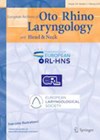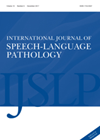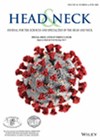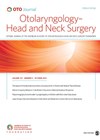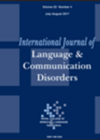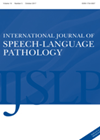
Journal Reviews
Metrics to evaluate post-ACDF dysphagia
The authors performed a literature review to evaluate the current classification metrics for quantifying dysphagia after anterior spine surgery and, specifically, cervical discectomy and fusion (ACDF). They selected 19 articles after reviewing literature from 2005 to 2021. The result of...
Risky behaviour: do care homes follow dysphagia recommendations?
A huge proportion of elderly people living in residential care homes will develop dysphagia. In Australia this is estimated at close to two thirds of all residents. It is the role of the speech and language therapist to make recommendations...
Till death do us part: the role of the speech and language therapists in palliative care
Increasingly, speech and language therapists are being involved in end-of-life and palliative care. This study reports on a three-phase project to explore this in the context of the Australian healthcare system. In phase one, the authors described a scoping review...
Swallowing it whole: the physical and psychological consequences of dysphagia
Living with dysphagia in the real world can be extremely challenging, both practically and psychologically. Long-term changes in taste due to chemo-radiation treatment for head and neck cancer, fatigue due to Parkinson’s disease, and physically impaired structures due to stroke...
Speculating on saliva during endoscopy
It has been noted that the presence of saliva in the pharynx and larynx during flexible endoscopic evaluation of swallowing (FEES) can be an indicator of increased risk of aspiration and consequent pneumonia, as well as weight loss and malnutrition....
Patient reported outcomes following total laryngectomy using the Swallowing Outcomes After Laryngectomy (SOAL) questionnaire
Following a total laryngectomy, alterations in the pharyngeal musculature and changes in the pharyngo-oesophageal segment due to reconstruction, results in altered bolus transit. Swallowing dysfunction after total laryngectomy for head and neck squamous cell carcinoma can vary from 10%-90%. There...
What do SLTs do in palliative care?
The authors of this article highlight that the number of older people has increased significantly in the last two decades, and the number of people over 85 has doubled in Australia since 1996. They attribute this to improved lifestyle factors...
Elevated prevalence of late-onset dysphagia among head and neck cancer survivors and identifying risk factors
Dysphagia is one of the most common problems affecting head and neck cancer (HNC) survivors. There are few studies investigating late-onset dysphagia post-treatment. The authors set out to investigate the prevalence of dysphagia-related diagnoses and procedures five years’ post-treatment, changes...
Instrument assessment preferable over standard beside swallow to determine prevalence of aspiration
Aspiration does not trigger the protective cough response in some patients. The patient’s response may vary according to fluid viscosities and volume. The authors of this prospective study investigated the prevalence of aspiration and response to aspiration of different viscosities...
Do you use the evidence or do you just know to do that?
In this day and age we generally consider healthcare practice to be evidence-based. Unfortunately there are not always the plethora of research articles available that address the dilemmas of day-to-day clinical practice. This piece of work considers what factors influence...

